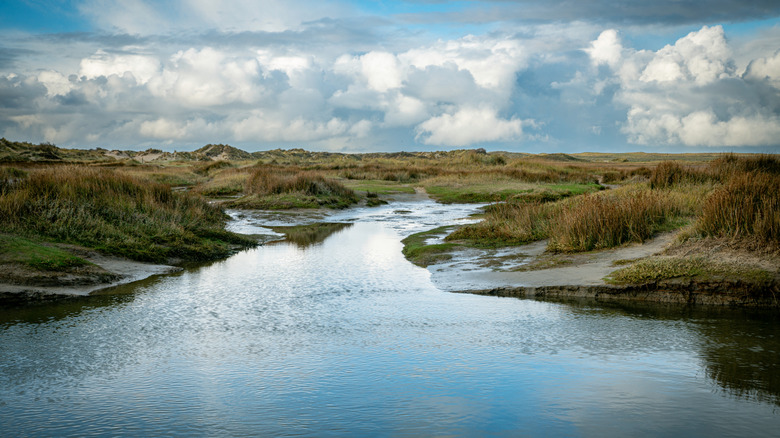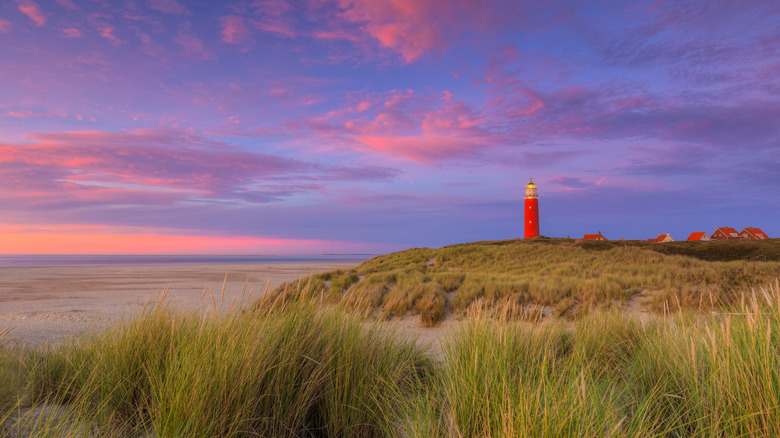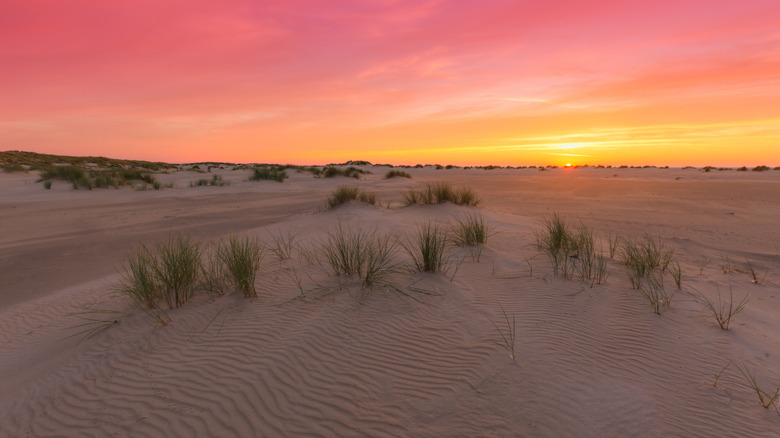The Dutch Coast's Unconventional Low-Lying Islands Offer A Serene Sandy Getaway With Romantic Charm
Follow the Netherlands' shoreline to its northeastern extreme, and you'll discover a serene coastal region that flows into Denmark and Germany via a series of UNESCO-listed sand and mud flats known as the Wadden Sea (the Waddenzee in Dutch). This area is home to Earth's biggest tidal flats system, and while it's stunning with vast cinematic beaches perfect for uncrowded exploration, it's also known for the dangerous tides that can devour sandbars and swathes of beach in a matter of seconds. In the Netherlands, the Wadden Sea is accessible via the Frisian Islands, low-lying landmarks that form a natural barrier between the mainland and the North Sea. These islands reach from North Holland to Friesland, just west of Hamburg, Germany's Venice of the North.
The Frisian Islands are characterized by romantic, windswept beaches giving way to forests and pretty Dutch villages. Cycling and walking are the most popular methods to get around, but there are numerous opportunities for boat trips and horseback treks on the entirely car-free Vlieland Island. Meanwhile, Terschelling overflows with cultural events, traditional food, and a blissful 18 miles of sandy beaches, some more than half a mile wide.
Wildlife thrives here, with the Wadden Sea hosting unique ecosystems, and millions of migratory birds forming elegant murmurations in the sky. The Frisian Islands also attract an active crowd, as the legendarily windy coast is perfect for sports like windsurfing, surf-kayaking, and kitesurfing.
How to explore the Dutch Coast's Frisian Islands
The best method of exploring the Frisian Islands (aka the Wadden Islands) is to do what the Dutch call wadlopen (hiking the sea bed). You'll hike the flats as the tide pulls back to reveal trenches, sandbanks, and scenery that changes as the water ebbs. Travelers can also reach the Frisian Islands via unique flat-bottomed Dutch sailboats, built to safely run aground at low tide. You can even spend the night on these boats anchored to the mud flats with nothing but the vast expanse of the Wadden Sea and stars for company.
Texel, the largest of the major Wadden Islands, has exceptional beaches with huge, flattened expanses of white sand. Over rows of picturesque dunes, you can find Duinen van Texel National Park, home to miles of walking routes through dunes and woodland. The park also has a fascinating history museum called Ecomare, which features an aquarium and seal sanctuary.
As you'd expect from a coastal region, the islands host lots of lighthouses, but most are not open to the public. An exception is the long red-and-white lighthouse on Ameland, which allows visitors to climb its 236 steps for beautiful 360-degree vistas over the Wadden's stunning expanse. The rest of Ameland is all rugged dunes, salt marshes, and an enchanting nature reserve that turns purple when the sea lavender grows each summer. And, with 62 miles of bike paths, it's one of the best islands for cyclists.
Plan your trip to the Frisian Islands
The closest international airport is Groningen Airport Eelde, but you'll only be able to fly in from destinations in Europe, such as Spain's Mallorca, the U.K.'s Guernsey, and Turkey's Antalya. A better option for international flights is to fly into Amsterdam's Schiphol Airport. From there, the Frisian Islands can be reached relatively easily, even as a day trip from Amsterdam. You'll travel from Amsterdam to Den Helder to board a ferry to Texel. The initial route takes about the same time by train or car, at approximately one hour and 10 minutes, and the ferry tacks on an additional 20 minutes to reach Texel.
If you're traveling from Groningen, a pretty alternative to Amsterdam with trendy shops and cafes, you can reach Ameland via the ferry at Holwerd. For a slow, picturesque journey, opt for the 50-minute-long Regular Ferry Service. Otherwise, get from Holwerd to Ameland aboard the 20-minute Fast Ferry Fostaborg.


